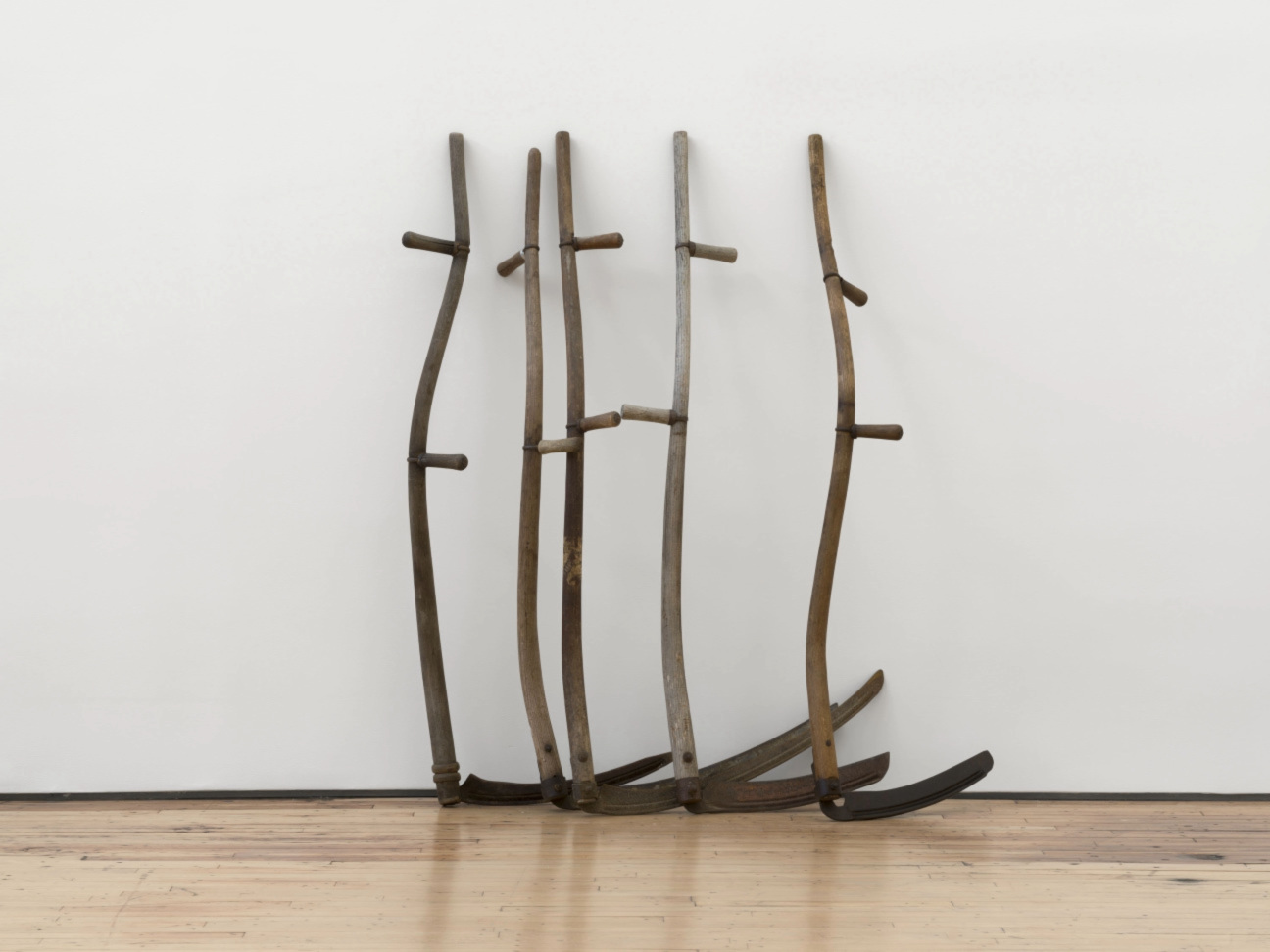
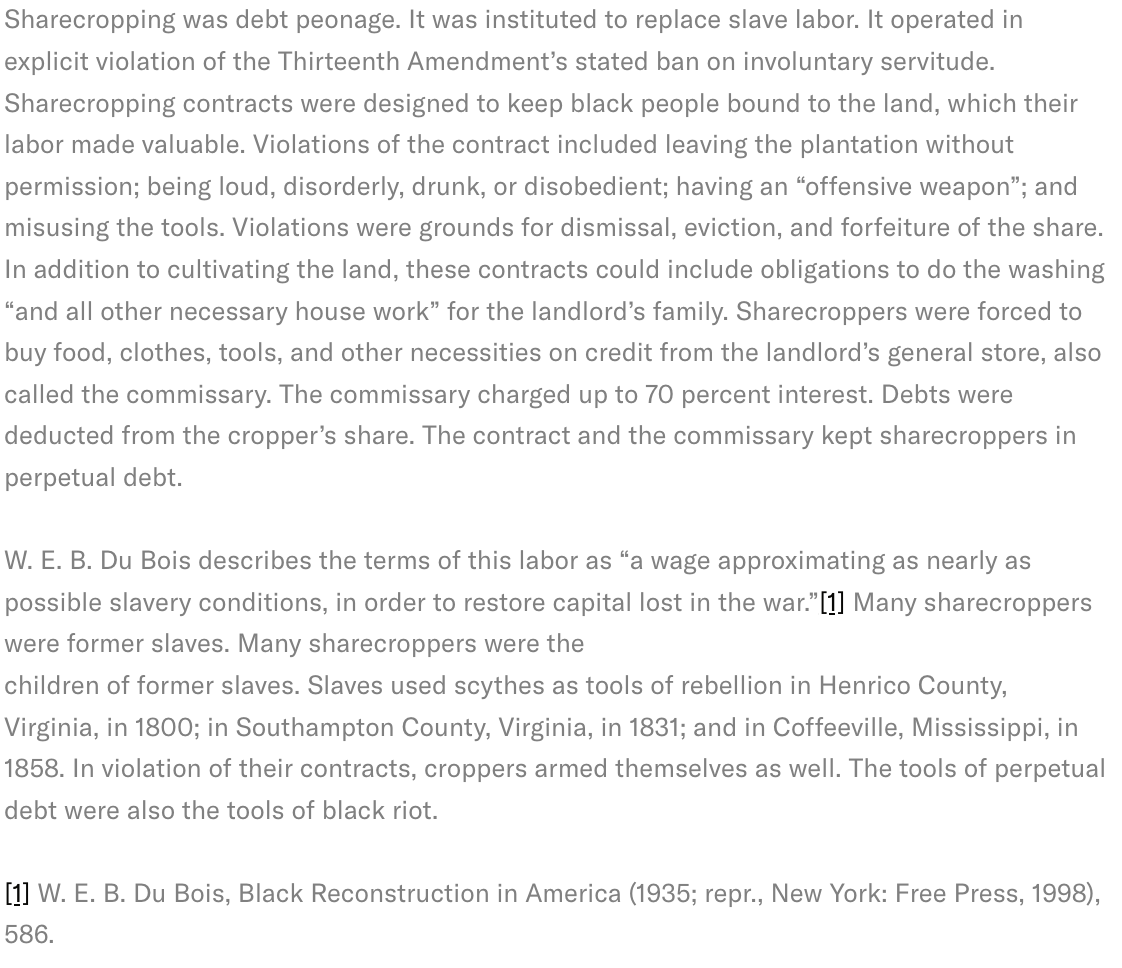
How Cameron Rowland Became the Leading Land Artist of the 21st Century
“Cameron Rowland, who is in their 30s, has been exhibiting for only a decade or so, but they have, since the outset of their career, gained attention for their exacting conceptualism, its balance of cryptic gestures and distilled exposition, as well as for the subject matter of their art: racial capitalism. In using contractual relations to unveil institutional histories and complicities—and perhaps especially in making their work unavailable to purchase (the artist negotiates rental and loan arrangements)—Rowland sails against the headwinds. They are something of an anomaly in this era of frictionless transactions, in an art system that rewards thinking small. With “Properties” at Dia Beacon, they further develop the most ambitious element of their largely dematerialized practice. They engage with notions of monumentality and permanence, advancing an expansive vision of reparations—and challenging the very category of real estate—through Land art…” —Johanna Fateman on Cameron Rowland’s installation, on view through Oct. 20

Frazadas, Tetrominoes, and Seagulls: Our Critics Share an Essential Guide to Tribeca Shows
“Feliciano Centurión grew up in rural towns during the military dictatorship of Alfredo Stroessner, living with his mother and grandmother, who taught him to sew. After his family moved to Argentina, he attended art school in Buenos Aires, joining a group associated with Centro Cultural Ricardo Rojas (El Rojas). The 26 works assembled here limn Centurión’s dislocated position as a migrant within this elite artistic milieu; he was the queer exile, unafraid of kitsch, who unabashedly doubled down on subjects already laden with cultural associations, such as the solar orb of the Argentine flag, the martyred body of a saint, and the Eye of Providence (the disembodied organ in a radiant triangle, as seen on the back of a one dollar bill)…” —Shiv Kotecha on “Sol naciente,” which ran through Feb. 8 at Ortuzar
“In the early 1990s, following the blockbuster release of the Nintendo Game Boy, some especially ardent button mashers started seeing puzzle pieces falling in their peripheral vision, especially when lying in bed, half asleep. Colloquially dubbed “the Tetris effect,” these sensations were eventually given a clinical name by cognitive psychologists. The estate of Joshua Caleb Weibley takes that term for the title of its new show, a sculptural installation on view at Chart…” —Will Harrison on “Game Transfer Phenomena,” which ran through Feb. 15
“The Latin verse in girum imus nocte et consumimur igni, commonly attributed to the poet Virgil, is a palindrome, which you can see for yourself by reading it in reverse. It translates to something like ‘we go round and round in the night and are consumed by fire.’ Ian Miyamura broke the line in half to title two of the meticulous oil-on-muslin paintings in his debut at Bureau…” —Paige K. Bradley on “They Learned to Look Up and Down,” which ran through Feb. 15

Everyone Is Talking About Painter Laura Owens’s New Show. Here’s Why
“For three decades, Laura Owens has put her medium through the paces with her nose-thumbing post-post-modernist feminist formalism, a resolutely intellectual as well as humorous project of synthesizing alleged opposites—deskilled and reskilled aesthetics, the handmade and the digital, Greenbergian precepts and illusionistic space (for example). But all the while, dessert has never left the table. Beauty, inseparable from the social baggage of taste, is always present and always presented self-consciously, free from the delusion that it’s something greater or more complicated than what someone (such as the artist herself) likes.” —Johanna Fateman on “Laura Owens,” which ran through April 19 at Matthew Marks Gallery

Art in the Age of Kenny Schachter’s Vacuous Robo Paintings
“In Kenny Schachter’s show at Jupiter gallery on the Lower East Side, I was struck by a sense memory—a visceral jolt of déjà vu. It was the feeling I had in the basement of my first New York apartment over a decade ago, when I looked up and realized all the piping above my head was covered in aging—and in places crumbling—asbestos insulation. It was as if my body, even before my mind, was telling me: Get out. This isn’t good for you. This will cause you harm.” —John Vincler on “Art in the Age of Robotic Reproduction,” which ran through April 26
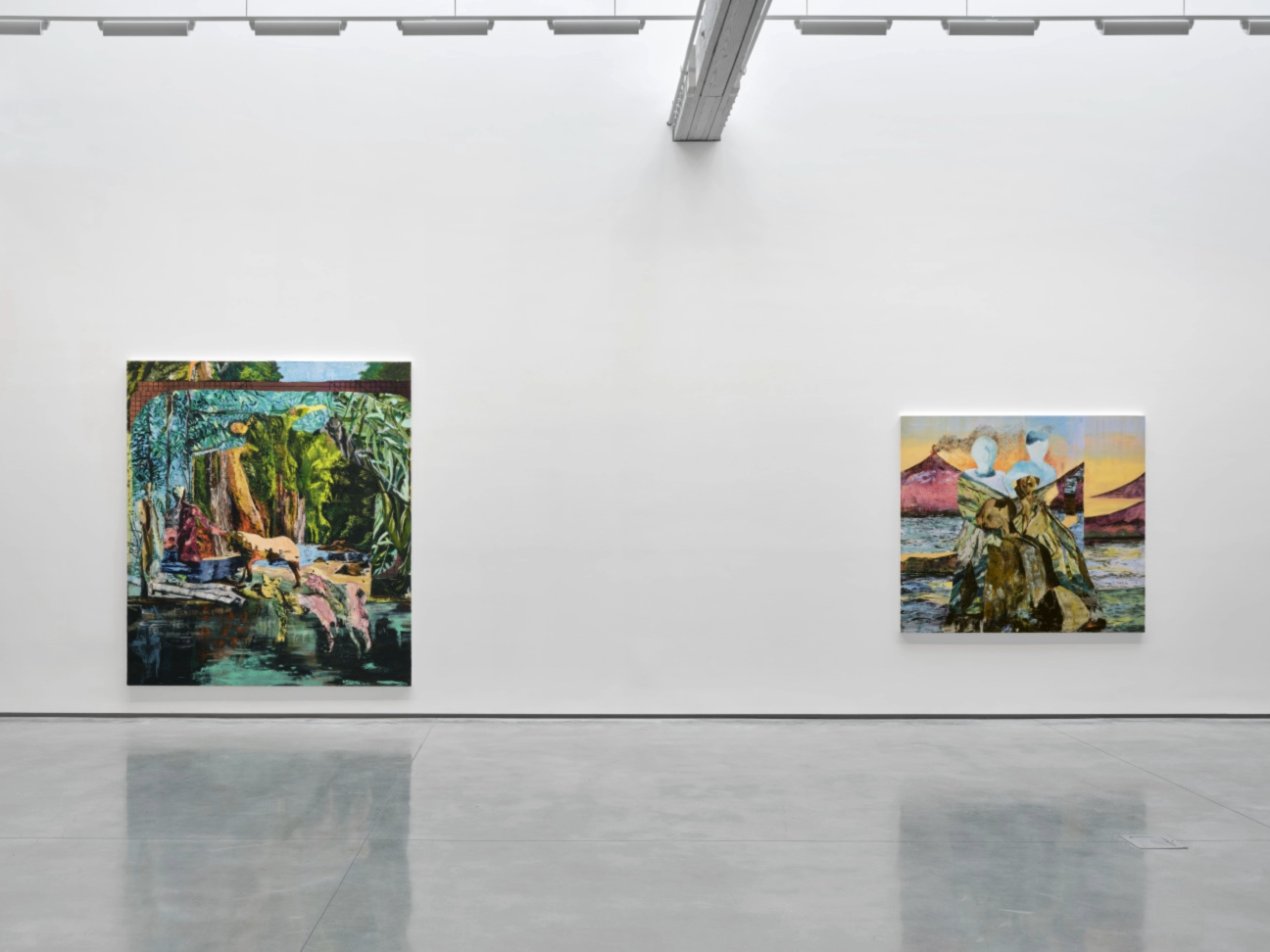
By Popular Demand: The Critics’ Table Presents Its First Los Angeles Edition
“Peer into the electric landscapes of Maia Cruz Palileo and you will start seeing things. Perhaps the ghostly outline of a human body dissolving into the brush. Or, perhaps, the contours of a dog, or a woman’s body sailing through the air. In other paintings, you’ll find scenes that mirror themselves—such as in Revir, 2024, which shows a pair of figures in a small boat navigating across a body of water that catches their reflection below. But is that a reflection? Or an alternate world…” —Carolina A. Miranda on “SATOR ROTAS,” which ran through April 26 at David Kordansky
“Just as Posenenske can be seen to turn the gallery inside out to reveal its hidden guts, Channer offers an interior view of Posenenske’s sculpture by pulling out the inner layers of its material, and moving it to the wall. Though you might not think of Los Angeles as the place for German Minimalism, these two artists have seduced their Californian audience with something we know a lot about: air conditioning units and the glamorization of industrial objects…” —Gracie Hadland on “Charlotte Posenenske and Alice Channer,” which ran through May 10 at Okey Dokey Konrad Fischer
“Su Yu-Xin is interested in capturing nature’s dynamic states—dynamism she deftly channels by drawing from a range of artistic styles. In some of her canvases, which usually take rounded, organic forms, you’ll find hints of the stylized landscapes of Qing Dynasty painters; in others, the machine-like forms of the Italian Futurists. But it all feels very contemporary; Su makes these idioms her own…”—Carolina A. Miranda, which ran through May 25 at Orange County Museum of Art
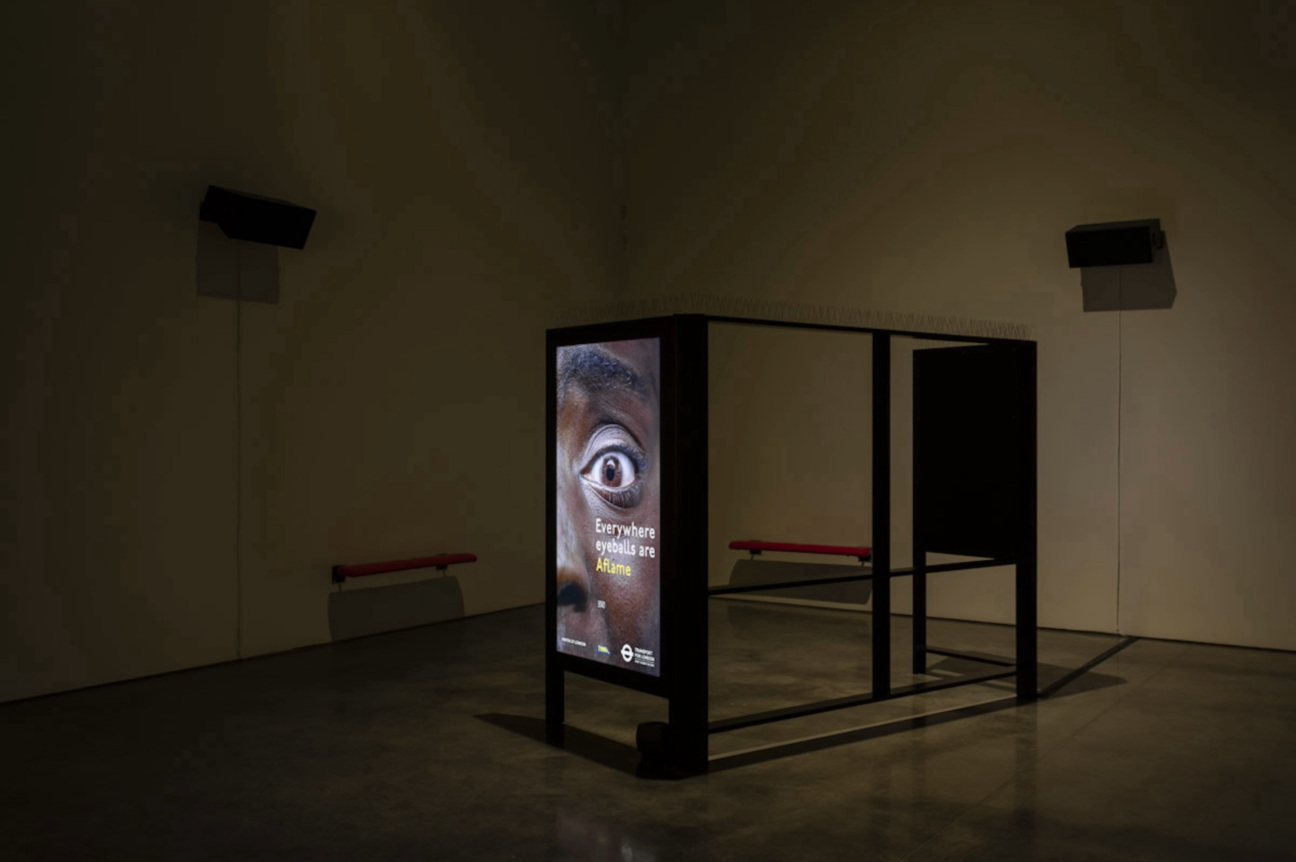
The Wow Factor: Brian Droitcour on Art and the Immersive Experience Industry
“What must a work of art do to make us feel something when we’ve been anesthetized by 10-second videos, marketing emails, and endless images of suffering? It can feel as though you need special training to understand a painting. Which forms best speak to a broad public? There’s a lot of money on immersive experiences as the answer to both questions. And there are plenty of spectacles these days that pander to shortened attention spans, surrounding us with motion and color, while staging great backdrops for selfies. But after viewers are wowed, then what? In recent exhibitions, Mark Leckey and Cory Arcangel have each tweaked the techniques of immersion to get at the essence of awe…” —Brian Droitcour on Leckey’s “3 Songs from the Liver,” which ran through Feb. 15 at Gladstone, and Arcangel’s participation in “<<ALL I EAT IN A DAY>>,” which ran through Dec. 1, 2024 at the Kunst Halle Sankt Gallen
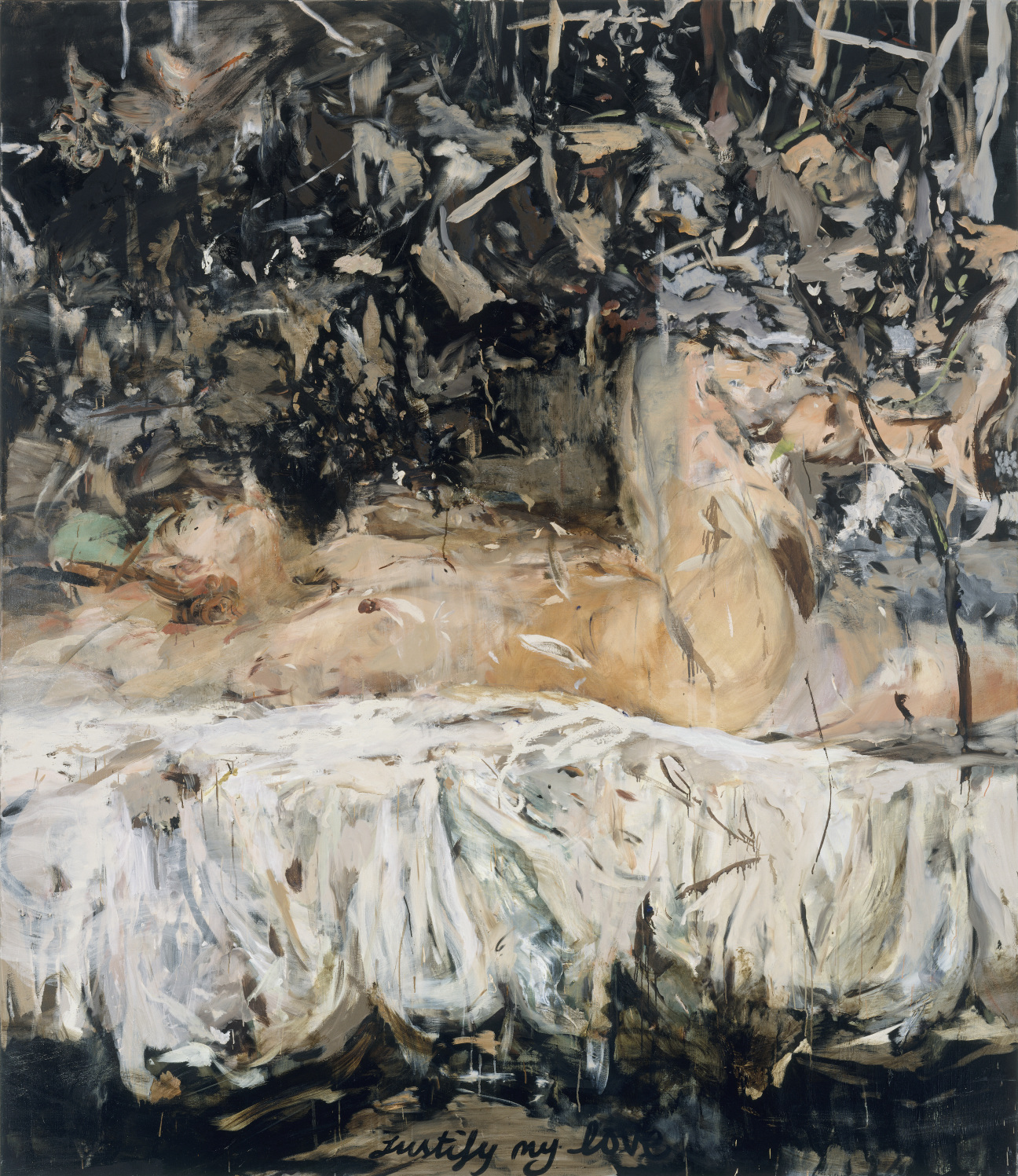
About Last Week: An Orbit Through the Highs and Sighs of New York’s Art-Fair Multiverse
“The high point of my Frieze experience was discovering the painter Karol Palczak, via his fanatically attentive painting of a rotting octopus at the booth of London’s Emalin gallery—très Chardin. Near some adorable bat paintings by Rodrigo Hernández, I ran into curator Lumi Tan, who selected the participants in Focus, the up-and-comer section of the fair. This year it included the purveyor of the bats, Lisbon’s Galeria Madragoa, plus local faves Gordon Robichaux and King’s Leap. I mentioned that the proceedings seemed a little more sedate than usual. She pointed out that no one was drinking champagne. Maybe that was the theme of the week: Despite ample amounts of literal booze, there was a general lack of intoxication…” —Domenick Ammirati on this year’s Frieze Week in New York

A New Cecily Brown Show at the Barnes Reveals a Painter in Her Prime
“Cecily Brown emphasizes her desire for people to regard her work slowly, citing the phenomenon of finding images in clouds or rocks, and the perceptual toggling engaged by optical illusions. Her bunnies, redolent with sexual allusion and symbolic meanings, were also inspired by the famous 19th-century Rabbit and Duck drawing (in which you can see both animals, but not at the same time) used by Wittgenstein to explain his notion of aspect perception. A quick glance is not enough for the artist. The frequent characterization of her imagery as fragmented, flitting formally between abstraction and figuration, only scrapes the surface of her concerns—as does a narrow focus on the discursive content produced by her virtuosic ability to metabolize and transform her art-historical sources…” —Johanna Fateman on “Themes and Variations,” which ran through May 25 at the Barnes Foundation
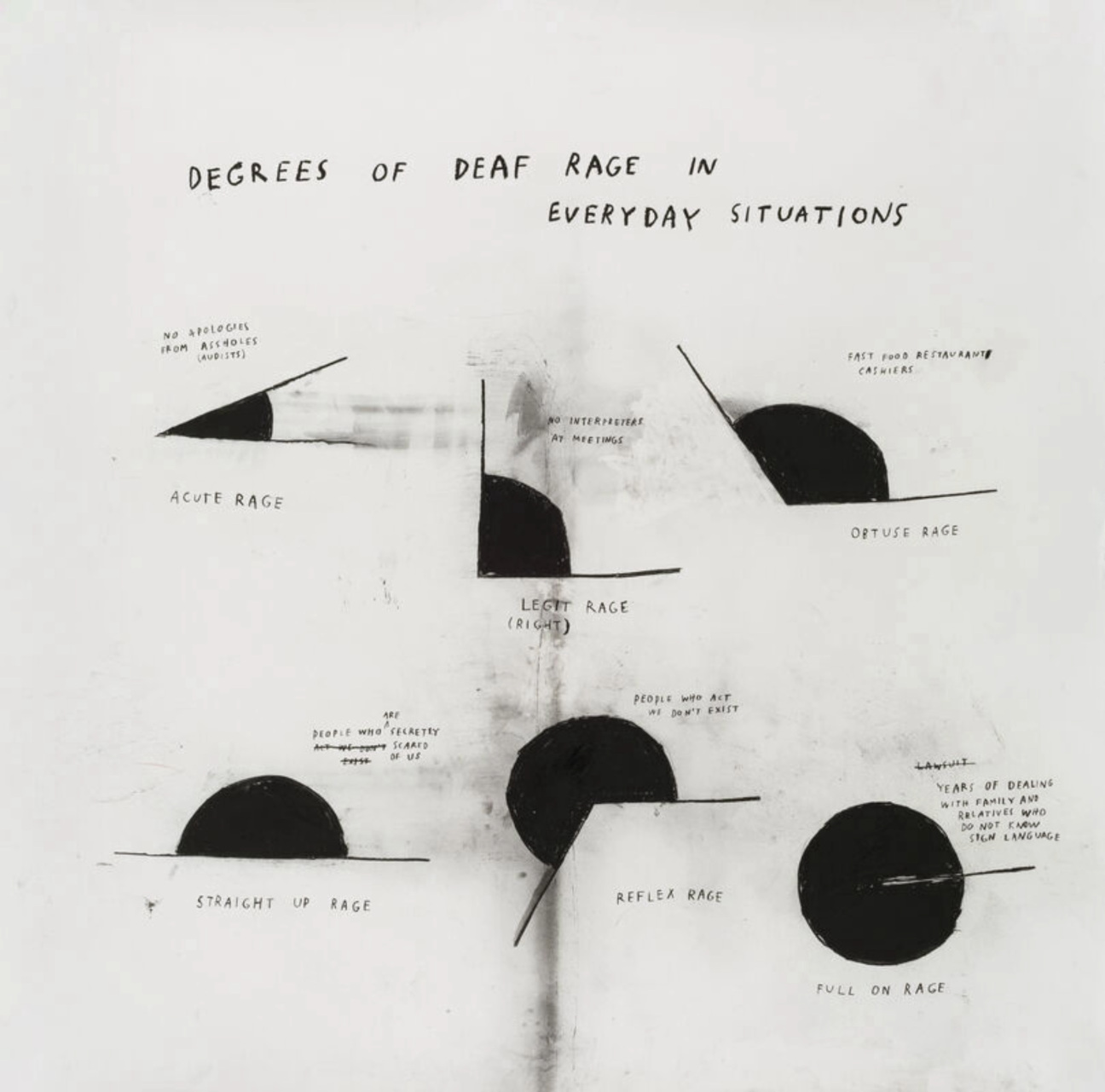
Feminist Nudes, Evil Flowers, and Musical Notation: Three Critics on What to See in New York
“Christine Sun Kim’s mid-career retrospective at the Whitney isn’t one of those exhibitions that reactionaries can use to claim identity’s role as some dour bogeyman in the art world. Thanks to Kim’s witty, piercing, and sometimes laugh-out-loud funny pieces across video, ceramics, and drawing (which span the early 2010s to the present), such a reductionist reading would be impossible…” —A.V. Marraccini on “All Day All Night,” which is on view through July 6
“Sylvia Sleigh called herself ‘in some ways, very traditional.’ It was a droll remark from the Welsh-born artist who settled in New York in 1961, as she is known for her women’s lib-era paintings of male nudes. It’s true that she borrowed compositional strategies from earlier centuries, reworking historical paintings with groovy figures from her social circle. But she used art history—and tradition—to make space for feminist imagery that sexist detractors would deem too marginal or risqué…” —Wendy Vogel on Every Leaf Is Precious, which ran through April 5 at Ortuzar
“Decadence, eroticism, death—in borrowing the title from Charles Baudelaire’s book of poems, translated into English as The Flowers of Evil, the current exhibition at Silke Lindner imports a seductive air of goth antiquarianism. The French symbolist poet’s book dates from 1857, but the references in the works on view extend back much further, especially in the stand-out works in this strong group show—a trio of conceptual paintings, all 2025, by the Portland, Oregon-born artist Chris Oh…” —John Vincler on “Fleurs du Mal,” which ran through March 15 and also featured Elizabeth Jaeger, Sang Woo Kim, Morten Knudsen, Barbara Wesołowska, and Tommy Xie
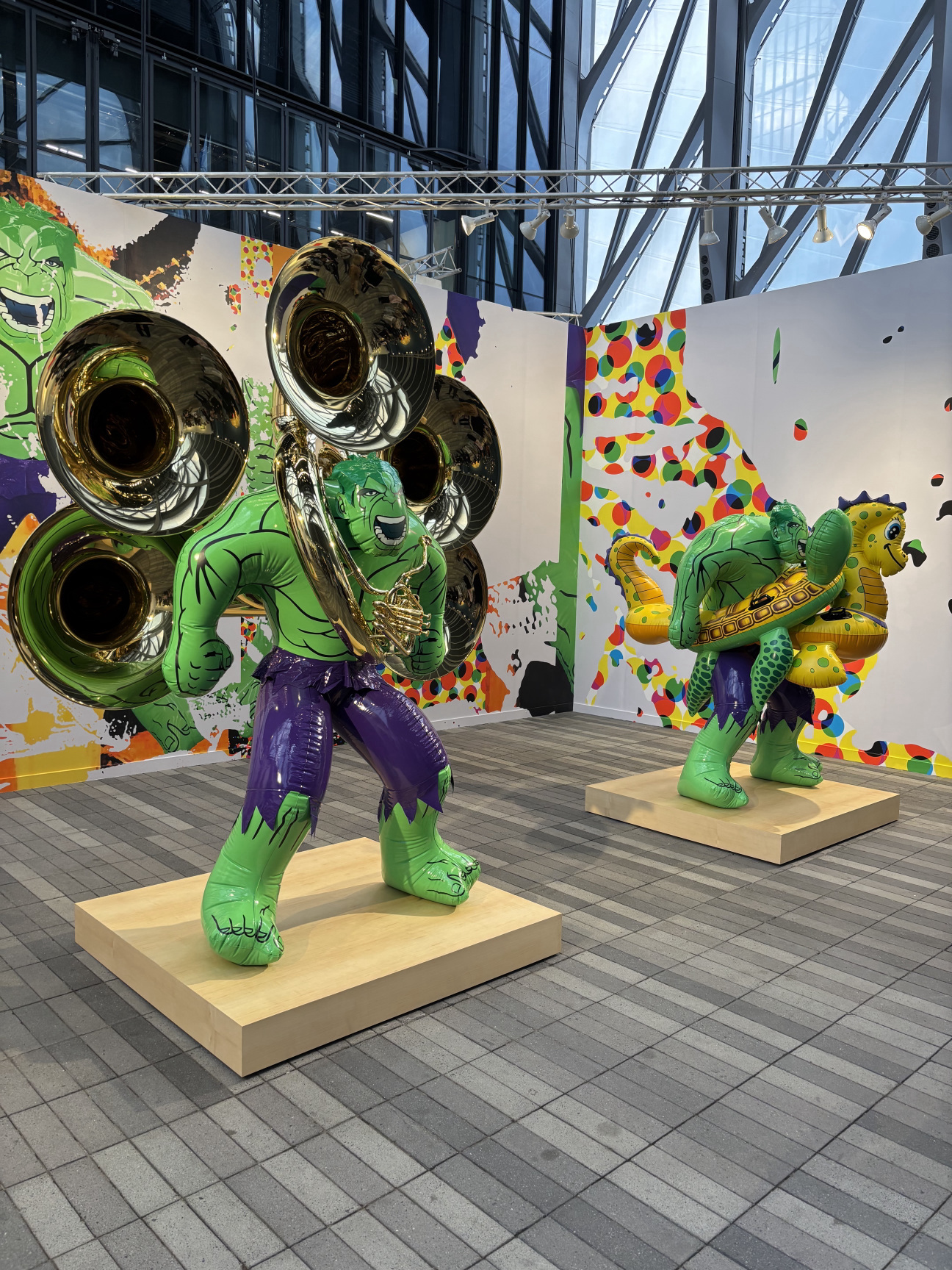
Sci-Fi Parables, Playgrounds, and Starry Nights: 3 Critics on 3 Unmissable New York Shows
“In the new video and sculpture installation by American Artist, which is staged on a low platform in the cavernous space of Pioneer Works, the past, the present, and the fictional are layered for an effect of both simultaneity and continuity…” —Zito Madu on “Shaper of God,” which ran through April 13
“It actually nagged at me if the show was too tasteful. But the more time I spent in the space, especially with her Dos and Don’ts series, initiated in 2021—wall-based mixed-media works that show the artist’s hand and heart most plainly—it became clear that this tension is deliberate. Taste is one of Henrot’s subjects—as are etiquette, class, the nuclear family, the logics of taxonomy, imagination, identity, and the affinities between the development of the artist and child…” —Whitney Mallett on Camille Henrot’s “A Number of Things,” which ran through April 12 at Hauser & Wirth
“The majestic images are exhilarating, even comforting, reminders of human insignificance, but, with Lê behind the lens, they also suggest the epochal violence of a new colonial frontier. In this impressive show by the great landscape photographer, dread is the unshakeable companion of wonder once again…” —Johanna Fateman on An-My Lê’s “Dark Star / Grey Wolf,” which ran through Feb. 22 at Marian Goodman

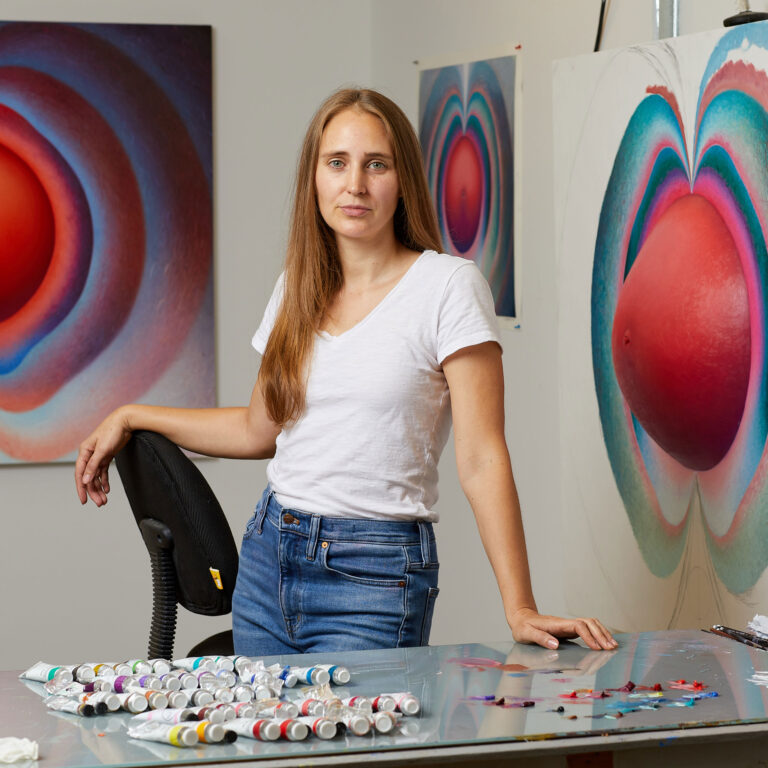
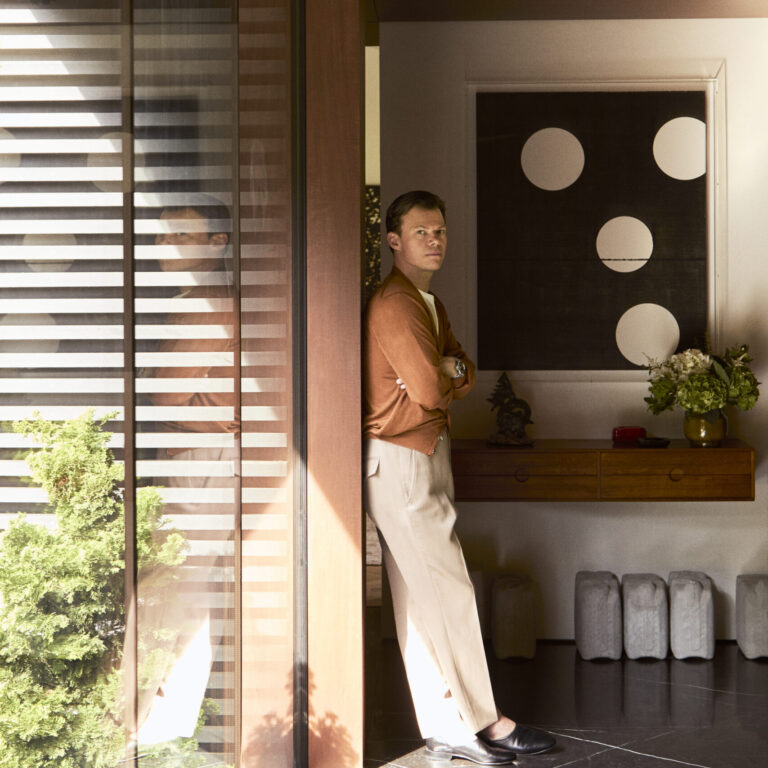

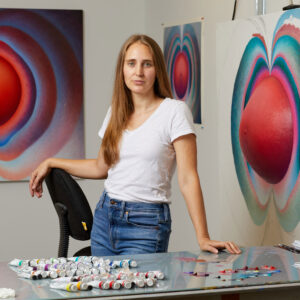

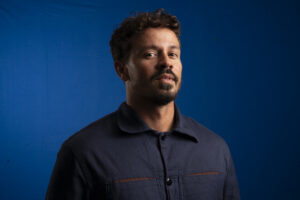



 in your life?
in your life?

